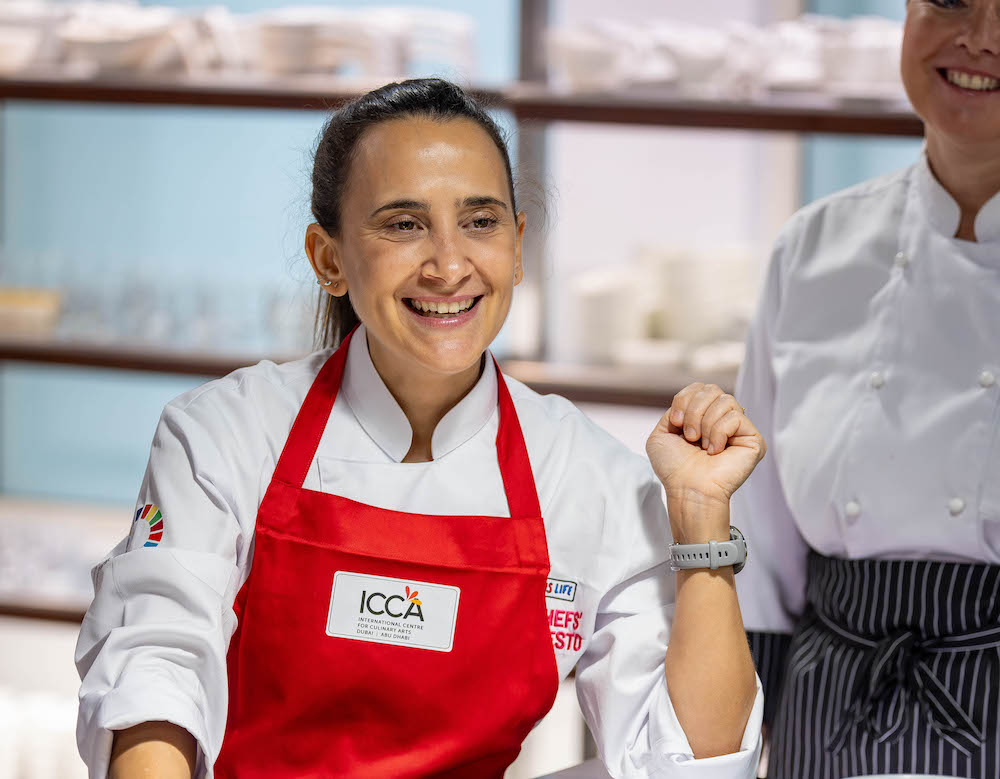
Patricia Roig
What’s your favourite climate friendly ingredient?
Seaweed is one of my favourites as there are many different varieties, it is easy to prepare, the flavour is intense and it gives texture to dishes. And it has many, many health benefits.
What inspires you about climate conscious catering?
Food can be just as tasty and impressive without fine dining kitchens or luxurious ingredients. Indeed, as a chef you have to work a recipe to reduce wastage, enhance flavour and improve textures.
Tell us something you’d like other chefs to know.
The food sector has so much impact on climate change, and chefs are very visible. Whether we set a good example or a bad one, we’ll be followed… make the right choice.
Ali Honour
What inspired you to take part in the COP28’s climate conscious catering workshop?
The opportunity to educate and showcase new concepts and techniques to the future chefs and establish a mindset shift and up skill current chefs.
What’s your favourite climate friendly ingredient?
Beans – they’re one of the healthiest and most environmenally friends foods, making them a great choice for both nutrition and the climate. They’re rich in protein and complex carbohydrates and have a low carbon footprint, can fix nitrogen and are generally water efficient.
How are you climate conscious in your own kitchen?
Closed loop zero waste cooking.


Pinky Linah Maruping
What inspires you about climate conscious catering?
Engineering menus that lower environmental impact, deliver better health, strive to hit the 1.5°C target and even lower costs!
What climate conscious practices do you do in your own kitchen?
I buy ‘local and seasonal’. Locally sourced ingredients reduce transport emissions vs foods that travel thousands of kilometers to reach our plates.
Seasonal ingredients taste better, are less inexpensive, more nutritious, and help fight illnesses the new seasons might bring.
What’s your favourite climate-friendly ingredient?
Bambara beans, a very common legume on the African continent. It not only survives and adapts naturally to extreme climates, but also acts as a fertilizer for the soil in which it grows. A good source of insoluble dietary fibre, they’re often used as a snack, to produce flour or as for vegetable milk. I use them in soups, stews and salads.







